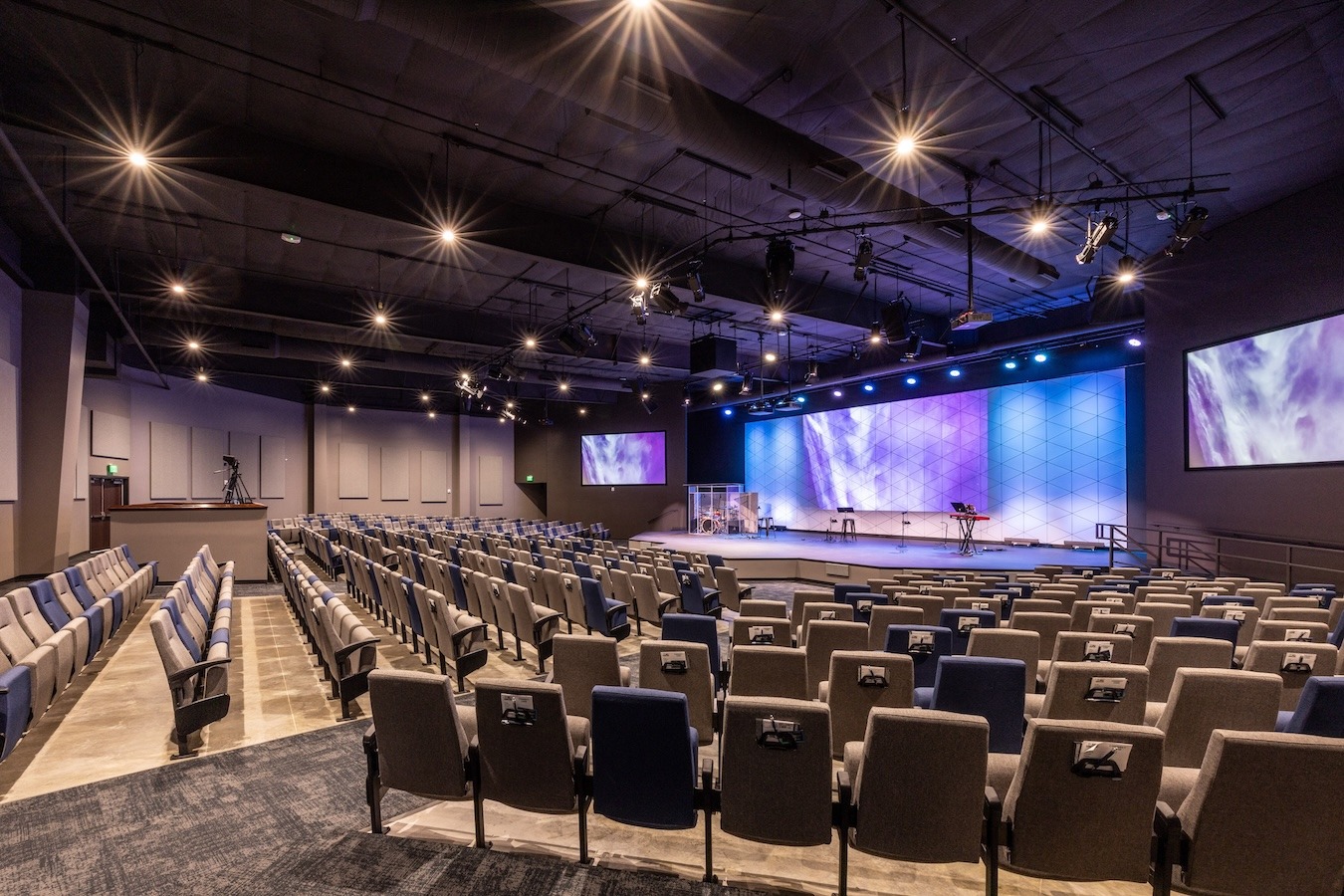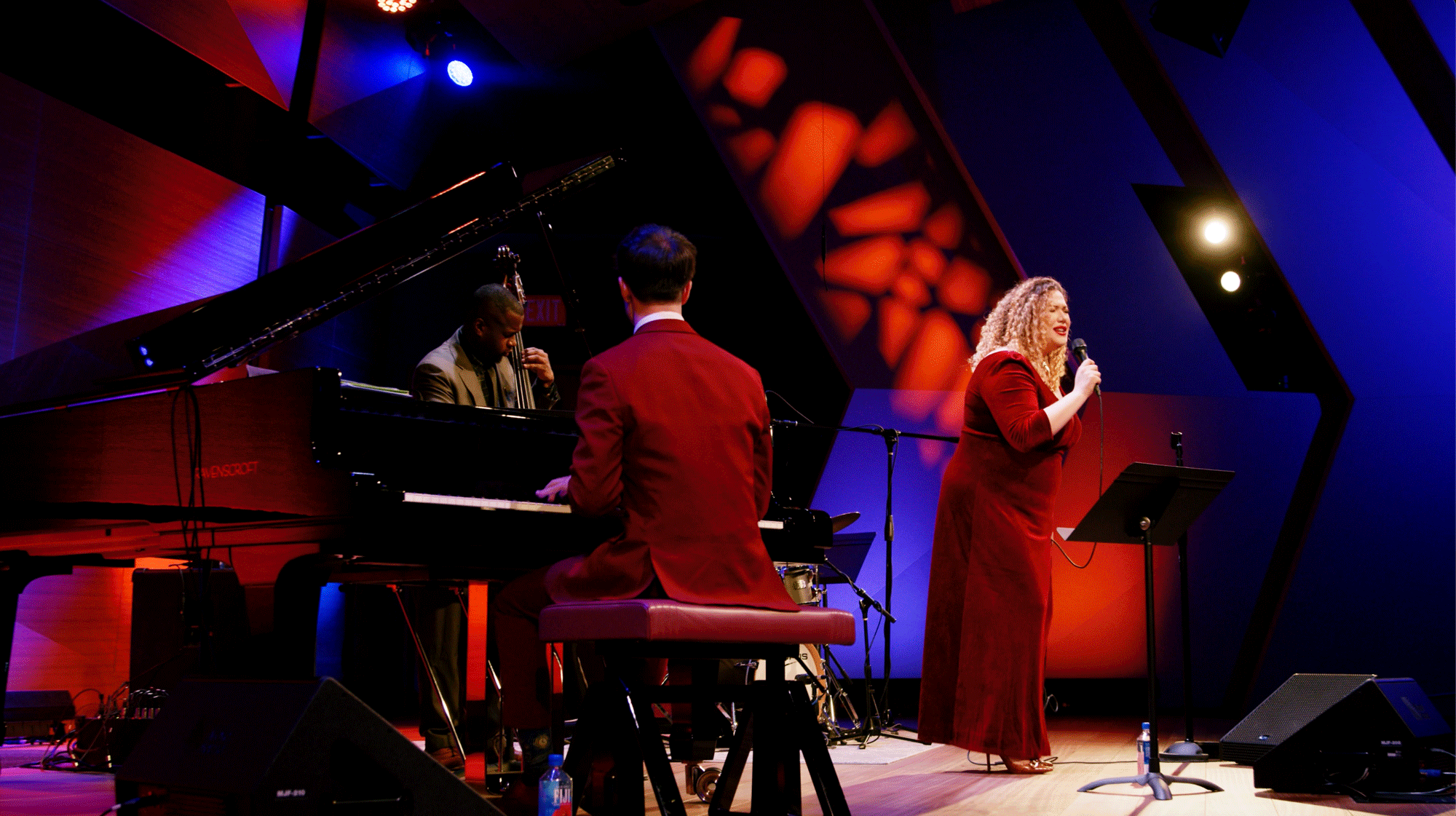The Architecture of Audio
Blueprinting Sound For Worship An architect designs a building to fit its function—we do the same with sound. What does that mean? It means we don’t...

We talk about sound like it’s simple—turn it up, turn it down. But the truth is, loudness is less about a number on a fader and more about how our ears (and brains) perceive frequency.
Human hearing isn’t linear; we’re more sensitive to some frequencies than others. So, a system producing equal energy across the spectrum may still sound “off” depending on how those frequencies interact with the space—and with our ears.
Welcome to the weird world of psychoacoustics.
The ear doesn’t just receive sound—it interprets it. Yes, frequency determines pitch, but it also plays a role in loudness perception. Certain frequencies, particularly in the 2kHz–5kHz range, are perceived as louder than others at the same SPL (sound pressure level). That’s why high to mid-range frequencies tend to cut through a space, and why too much of them can make a room feel piercing, even when levels are technically balanced.
In some cases, perceived reverb isn’t just environmental—it’s physiological.
Frequencies interacting with the shape and structure of the ear can create a sensation of internal echo or masking (when two sounds cancel each other out.) Combine that with reflections bouncing off untreated surfaces, and you get a listening experience that feels disjointed, disconnected, or even fatiguing. We don’t know about you, but that certainly doesn’t sound very “intentional.”
Understanding how listening and frequency go hand-in-hand is what allows us to intentionally design audio-visual systems that cater to each venue’s specific function and personality.
Yes, every space has a sonic personality—a set of acoustic behaviors shaped by architecture, material, and even climate. Temperature, humidity, and altitude can alter the speed of sound and shift resonant frequencies. That’s why two identical systems can sound drastically different in two identical rooms…on two different days.
For example, “bright/live” is a personality where an increase in hard surfaces combined with little sound absorption makes for harsh reflections and high frequencies. “Damp/dead” is excessive absorption lacking natural reverb and clarity. Or a space can be “boomy” when it has strong resonant frequencies, particularly in the low-frequency range, causing a booming or rumbling sound.
To visualize how frequency behaves in a room, we use tools like waterfall graphs to help us track how sound energy decays over time. We can apply that data to directional control cardioid patterns that let us sculpt how sound radiates through the space, minimizing unwanted reflections and improving intelligibility.
Ultimately, it's not about pushing more volume or throwing gear at a problem. It’s about shaping the frequency response of a space so that clarity is preserved, emotion is conveyed, and distraction is minimized. Frequency is foundational, but without context, it’s just data.
With the right science behind the art, we can design systems that feel right, no matter the function.

Blueprinting Sound For Worship An architect designs a building to fit its function—we do the same with sound. What does that mean? It means we don’t...

Helping The World Communicate Better We’ve all been there: sitting in a sleek, modern boardroom where the design is impeccable, but the acoustics?...

Ever sat in a theater and felt the bass pulse through the floor or heard a voice carry so effortlessly that it seemed to hang in the air, waiting for...